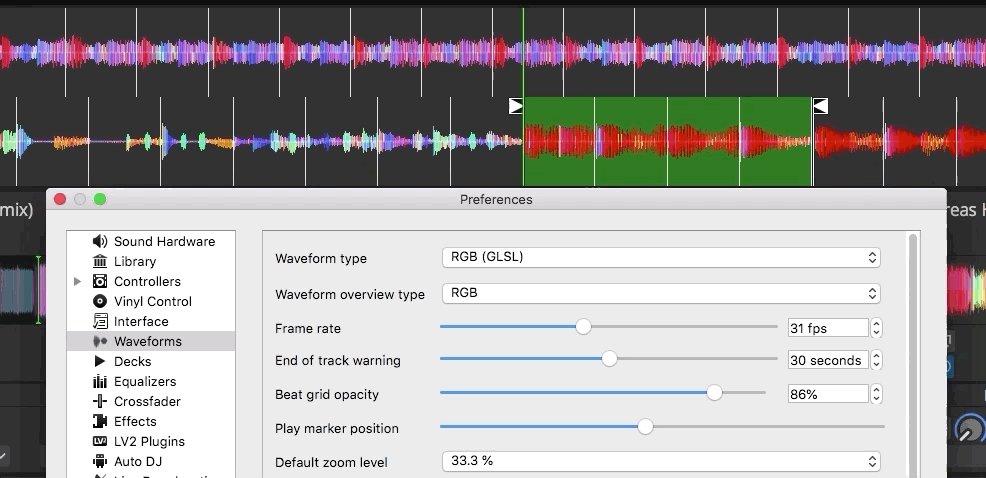We pay a lot of attention to the big dogs of the DJ world on DJTT, but often, innovation comes from the underdogs. This week, Mixxx (the free, community-built, open source DJ software) is rolling out a new version into beta. There’s a few new features, and a commitment to faster releases – read on for the details.
Mixxx 2.2 – A Sign Of Faster Releases
Historically, Mixxx has been on a slower release cycle, but the last year of releases has really started to buck the trend. The changelog for 2.2 starts out with a bold declaration:
“Since we are now releasing Mixxx more often, the changes are not as big as between Mixxx 2.0 and Mixxx 2.1.”
Yes, these faster releases are likely to be smaller in feature set – but to regularly bring a software product to a public release state is impressive. Her’s there
This type of very active community-driven development is welcome in an industry where the top players work in secret, aiming to one-up each other on what have become relatively small feature discrepancies between softwares. If you love the idea of the project, there are a bunch of ways to get involved as a developer, DJ (tester), translator, or even graphic artist. Check out the details on Mixxx’s site here.
Here’s the other core features that are in the Mixxx 2.2 beta:
GUI Scaling For High Density Screens
“We are switching from Qt 4 to Qt 5. Qt is the toolkit that allows us to write one Mixxx application that runs on Linux, macOS, and Windows. For users, the most noticable difference from this will be improved support for scaling the graphical user interface (GUI) for high pixel density (high DPI) screens. The scaling we used with Qt 4 in Mixxx 2.1 scaled most parts of the GUI, but some small parts like the arrows on menus and widgets in the preferences did not scale. Now with Qt 5, everything scales automatically according to the operating system scaling settings.”
Tackling high density screens is something that not every DJ software has on the top of their priority list – for instance, even the upcoming Traktor Pro 3 release doesn’t have a Retina-ready display functionality.
Mixxx upgrading to the new version of the Qt toolkit and allowing the operating system to scale the software’s interface to the native resolution shows how much easier something can be in a small team or project. Scaling is different from just magnifying a GUI – which is what a lot of non-Retina/high density display software does.
Dry+Wet Mode For FX Mixing

Instead of every effect in Mixxx being slowly adjusted between dry and wet, the beta adds a second state for effects units, Dry+Wet mode. This mode adds in the wet signal to the complete original dry audio:
“Previously, the mix knob always crossfaded between the dry signal (input to the first effect) and wet signal (output of the last effect). This is now called Dry/Wet mode and is the default. The new Dry+Wet mode always keeps the dry signal at full volume and the mix knob controls how much of the wet signal is added. This allows for adding sounds with effects without modifying the underlying track. For example, with the effect unit in Dry+Wet mode, you can load an equalizer or filter effect before the Echo effect to remove bass frequencies from the echoed signal without removing the bass from the track.”
LV2 Effects Plugins
LV2 is an open standard API for audio effects plugins that is commonly used in Linux/GNU operating systems. Since Mixxx nearly stands alone in terms of cross-platform releases of DJ software on Linux, it makes sense that the developers would incorporate a feature that focuses on those platforms.
“Many GNU/Linux distributions package LV2 effects plugins that can be installed separately from Mixxx. Because many LV2 plugins are not useful for DJing, you must explicitly enable plugins in the Effects section of the preferences before you can load them in the Mixxx main window. Currently there is no way to show the GUI for LV2 plugins in Mixxx. While LV2 effects are technically cross-platform, in practice there are very few LV2 plugins that are distributed for macOS and Windows. Mixxx 2.2 has LV2 support enabled for GNU/Linux and macOS, but not for Windows.”
Wondering what type of LV2 audio effects plugins are out there? Here’s a list of some of them.
Waveform Display Adjustment

Mixxx already has one of the more customizable interfaces out there in terms of waveform display options, but the new update has a bit more in store (you can see it in action above):
“One option allows you to adjust the opacity of the beatgrid lines. The other allows you to adjust where the currently playing position is in the waveform. For example, if you do not want to use screen space for parts of the track that have already played, you can move the play position to the left.”
The Mixxx 2.2 beta is available for download here on Mixxx.org





